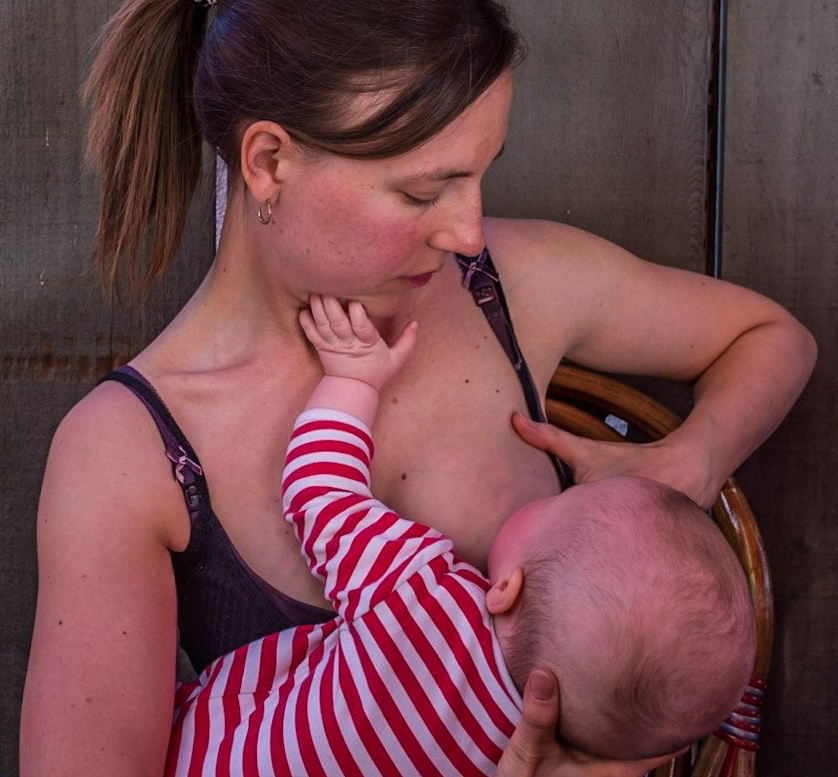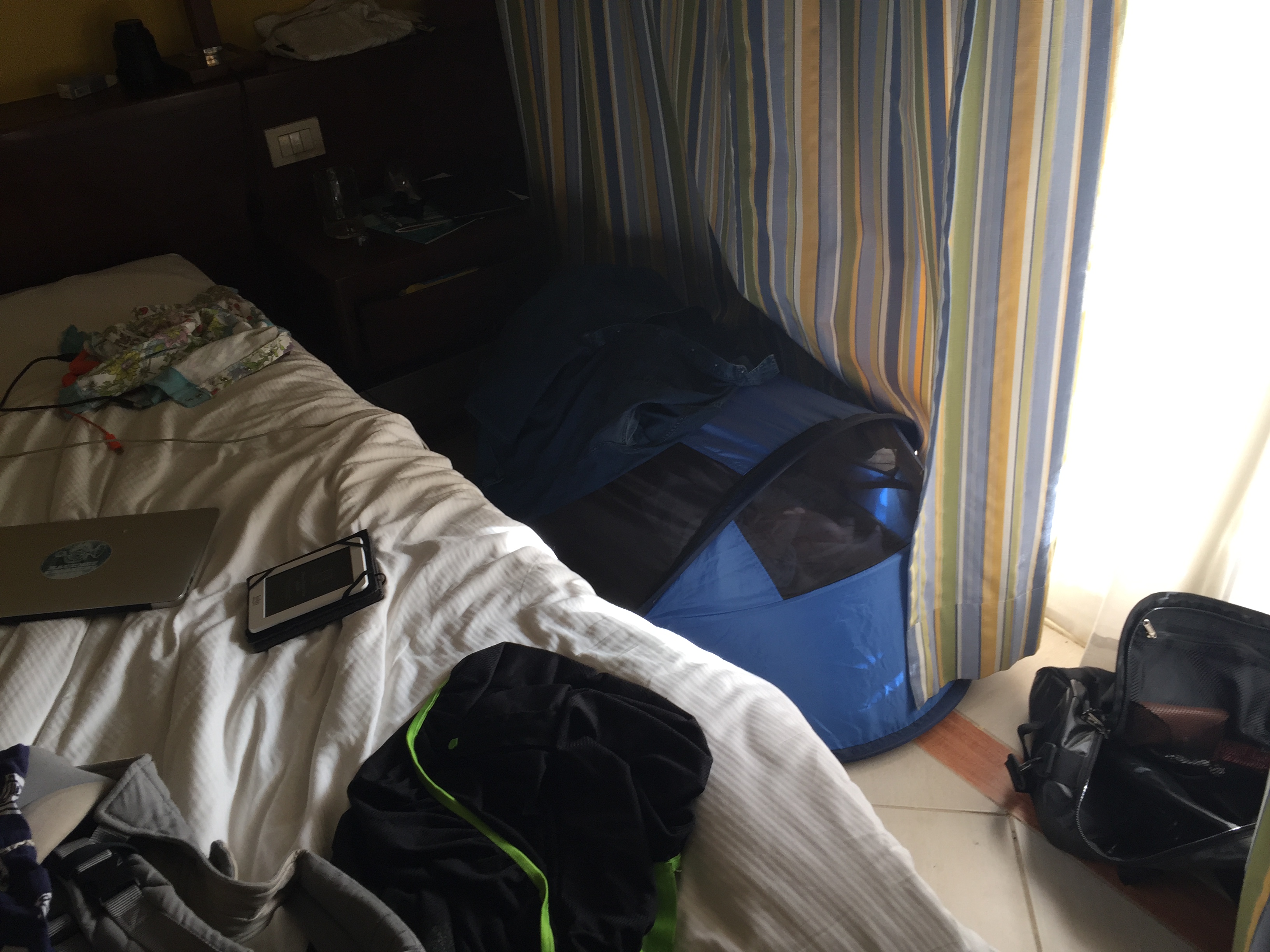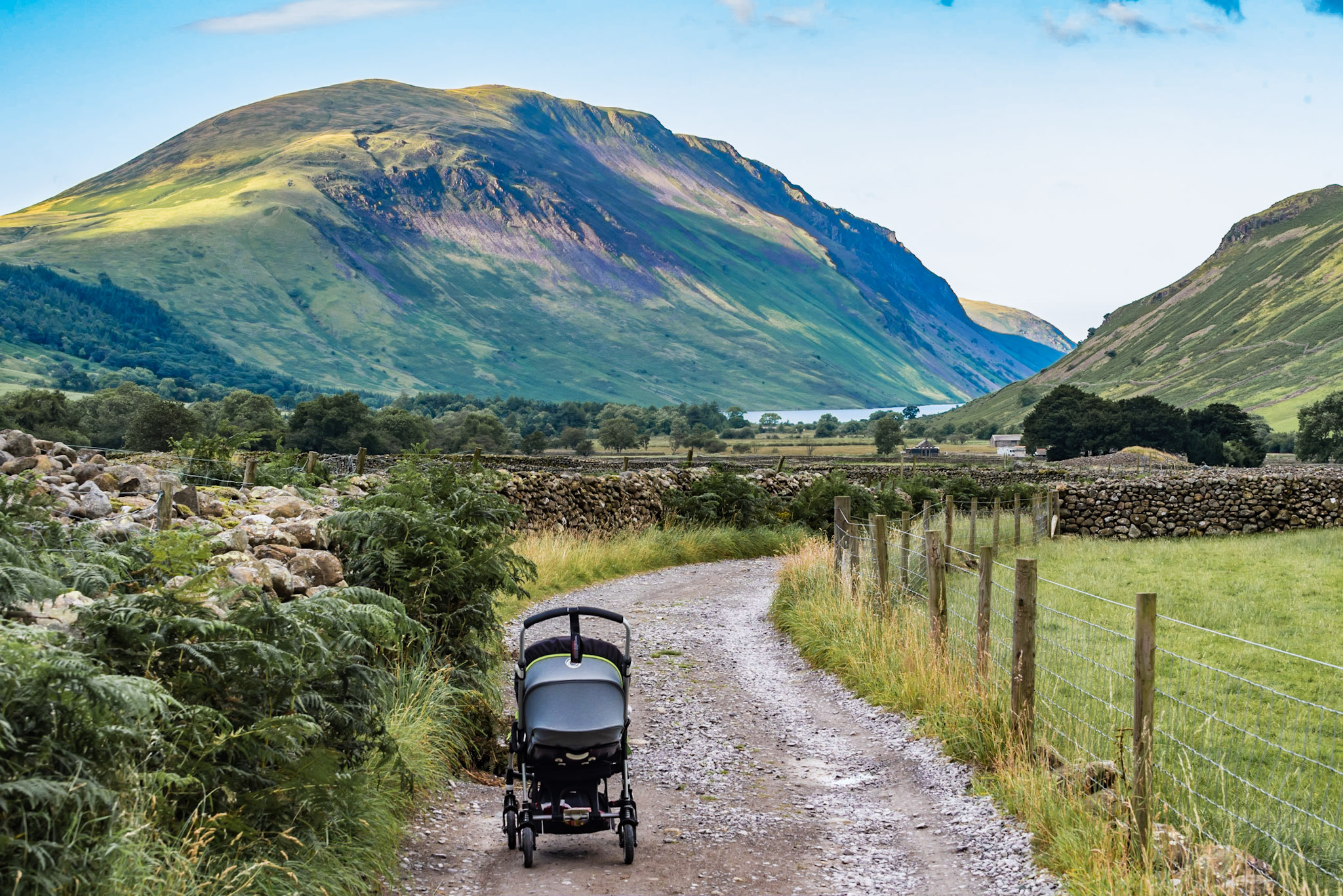I’ve recently stopped breastfeeding the baby girl, having successfully nursed her out and about all over the place over the last year and a bit, including to the US and Egypt. I never experienced the slightest bit of hassle, finding that my go-to breastfeeding clothing solution – strappy top under a T-shirt – did the trick pretty much everywhere. In cold places I added a couple of layers on top, finding that thinner fabrics were more convenient than bulky ones that bunch up when you lift them to get your baby to your boob. Swimwear-wise, I found triangle bikinis most convenient for breastfeeding on the beach (top tip: remember to give your nipples a once over with a wipe – as chemical-free as possible – before feeding your baby straight after a dip in the sea).
In hot places where wearing two layers was too much, I opted for lightweight dresses with buttons down the front. At least that was the idea. Sometimes, however, I found myself feeding the baby girl in just a strappy top, and basically revealing an entire boob to the world, as in the photo below. I didn’t plan to expose myself that day, but I was so warm I just couldn’t bear to keep my second layer on. Fortunately, no one in the restaurant batted an eyelid, and it was only when I saw the photo that I realised quite how naked I had been. I paused over whether to include the picture here, but decided to post it because I think it’s helpful to have positive, unambiguous images of breastfeeding out there in the world.
Though breastfeeding in public is welcomed in most places, there are corners of the globe that aren’t too keen, so if you’re a breastfeeding mother it’s worth checking before you travel to set your mind at ease/arm yourself with some facts about your rights in case anyone confronts you. Wikipedia has a handy list of attitudes to breastfeeding in public around the world, which is a good start. Googling “attitudes to breastfeeding [your destination]” should bring up various resources and forums too. If you’re still nervous, consider packing a breastfeeding cover. I never used one so I can’t recommend one personally, but this handy roundup from Made for Mums should give you an idea what’s available.
When it comes to feeding your baby on the move, department stores and airports often have parents’ rooms for just that purpose. Posh hotels can be a good option too – though not all of them, as Claridge’s made abundantly clear a couple of years ago.
Wherever you find yourself, if privacy is a factor for you when feeding, opt for a table by the wall and sit with your back to the room. As far as your physical comfort is concerned, look for a chair with a back. I never got the knack of breastfeeding the baby girl in the sling, but would have loved to do it – friends who’ve mastered this skill find it both convenient and discreet.
Other things to take with you: nursing bras, obviously, but pack more than you think you’ll need. Between the stresses of travel, the time difference and a change in climate, it’s likely that your baby will be feeding more frequently than usual, which means that your breasts might become engorged and leaky. Bring a small bottle of travel wash (you can use shampoo, but it won’t be as effective) and a mini folding clothes airer so you can wash and dry milky bras overnight. You’ll want to bring a bigger supply of nursing pads and muslin squares than usual for the same reason.
If you’re planning to express while you’re away, take a manual breast pump rather than an electric one – they’re much lighter and you don’t run the risk of running out of batteries or forgetting the power cable. Remember that any expressing or feeding equipment that comes into contact with milk needs to be sterilised until your baby is a year old (according to the NHS) – you can read my post on the various options for sterilising while away from home here.
Finally, a wide-brimmed hat will provide shade for both you and your baby when nursing in hot destinations if none other is available. If you, like me, are the type of woman who has always wanted to wear such a hat but never had the nerve before, now is very much your moment.




